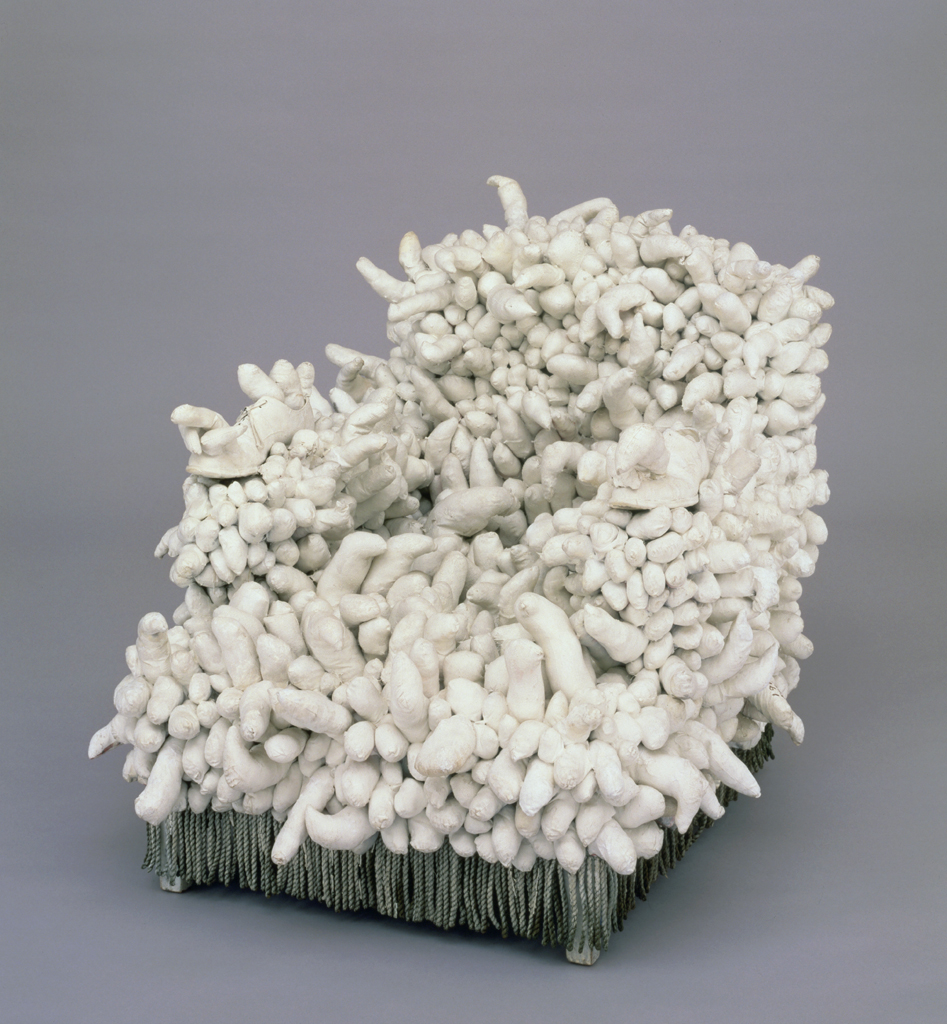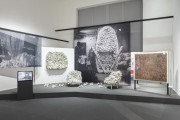Yayoi Kusama
(Matsumoto, Japan, 1929 - )
Arm Chair
1963
Acrylic on chair, shoes and sewn and stuffed cloth pouches
38 x 38 x 50 in. (96.5 x 96.5 x 127.0 cm)
Collection of the Akron Art Museum
Gift of Mr. Gordon Locksley and Mr. George Shea
1970.54
© Yayoi Kusama
More Information
These are from Yayoi Kusama’s first body of sculpture, which the artist described as “accumulations.” She covered utilitarian objects with masses of phallic stuffed and sewn cloth pouches and painted them either a single color or with polka dots. Symbols of traditional female roles—domestic objects and the activity of sewing—are joined with male protrusions. In Kusama’s work, everyday objects merge with biology gone awry in a surreal world leavened by humor but dominated by obsession.



